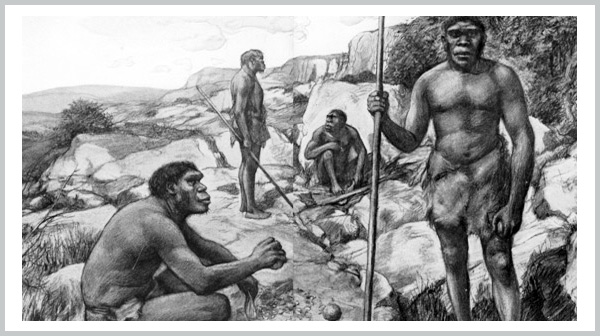
Neanderthals
Name: Neanderthals (Homo neanderthalensis)
Conservation Status: Extinct
Neanderthals were an early kind of human who lived in Europe and possibly west Asia from 120,000 years ago until 35,000 years ago. Neanderthals are often known by their burly stature and heavy brows. Unfortunately, they are also often portrayed as stupid or beastly versions of ourselves. In fact, the average size of the their brain was equal to, or larger than, the average modern human brain.
Neanderthals made significant advances in stone tool technology, and they show some of the earliest signs of the emergence of human culture. Neanderthals were the first people to systematically bury their dead.
Sometimes tools or animal remains that may have been intended for use in an afterlife were placed in the grave.
There is even some evidence that Neanderthals were the first to place flowers at the site of a burial and to perform crude surgery that sustained the life of the severely injured. This evidence suggests that Neanderthals engaged in complex ritual behavior and were capable of abstract thought, including recognition of the importance of the individual to society and of society to the individual.
Although no one knows exactly why Neanderthals died out, many anthropologists believe that they were driven to extinction by competition from modern humans who migrated into the region from Africa. This scenario is known as the Replacement Theory.
In this hypothesis there was little or no exchange of genetic material between Neanderthals and modern humans (Homo sapiens). If this view is correct, then the first extinction caused by modern humans was that of our closest cousin.
Another theory is that Neanderthals were just another kind of early modern human, a regional subgroup that interbred with other regional subgroups, each with its own distinct physical and cultural traits.
Thus, Neanderthals were not a separate species that died out, but a subpopulation that gradually evolved, together with other human subpopulations, into modern humans. This explanation is known as the Multi-Regional Theory. If this theory is correct, then the extinction of Neanderthals is really a “pseudoextinction.”
Both theories derive from archaeological evidence which does not easily yield answers to difficult questions about the ancient past. In many cases this evidence consists of stone tools rather than bones. A particular style and grouping of stone tools, known as the Mousterian assemblage, is associated with Neanderthal bones.
Thus, where Mousterian tools are found, Neanderthals are presumed to have lived. However, because Mousterian tools also have been found in association with modern Homo sapiens remains, they may not be a reliable indicator for the presence of Neanderthals.
If more bones could be found and accurately dated, the mystery of Neanderthal interactions with modern humans might be solved. Unfortunately, bones are very difficult to find and scientists are forced to make inferences from stone tools, until more bones are discovered.
Whether the Neanderthals became extinct by evolving, or whether they died out without issue, their disappearance from Europe and west Asia was complete by about 35,000 years ago. Since that time, we have been the only humans on Earth .
Questions for Thought:
Modern humans may have been causing the extinction of other species from their earliest appearance on Earth. In what ways is the case study of Neanderthals different from most of the other extinction and endangered species cases you have read about? In what ways is it the same?
Related Classroom Activities
[CS2-8,C3-1,C3-2, General]